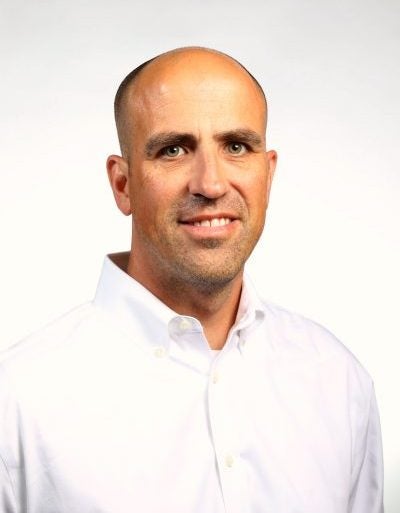Brody School of Medicine researcher receives NIH funding for skeletal muscle research
A faculty researcher with Brody School of Medicine at East Carolina University has received a $750,000 grant from the National Institutes of Health to further explore the implications of a skeletal muscle that can function without oxygen.
Dr. Espen Spangenburg, associate professor in Brody’s Department of Physiology, leads a lab where the skeletal muscle was discovered; he is principal investigator of the grant project in collaboration with colleagues at the University of California–San Diego.

Dr. Espen Spangenburg is the principal investigator on an NIH-funded grant project exploring the health implications of a skeletal muscle that can function without oxygen. (Contributed photo)
The grant is sponsored by the National Institute of Arthritis and Musculoskeletal and Skin Diseases, an NIH institute that developed the initiative to support grant projects that “pursue unusual observations, test imaginative hypotheses, investigate creative concepts and build ground-breaking paradigms—all of which deviate significantly from the current prevailing theories or practice,” according to an NIH description of the funding opportunity.
“We have identified a skeletal muscle that can work for short periods of time without oxygen,” Spangenburg said. “The goal of the grant is to define the mechanism the identified muscle uses to function without oxygen and determine if the mechanism can be used to protect other tissue from an ischemic insult.”
In other words, the grant will pave the way for researchers to explore whether the skeletal muscle discovered here could have far-reaching health implications by protecting against the effects of ischemia— an inadequate blood supply to an organ or part of the body, especially the heart muscles.
Metabolic disease and cardiovascular disease often have an underlying issue of either acute or chronic ischemia exposure that exacerbates the condition, Spangenburg explained. There are currently very few options to lessen ischemia-induced tissue dysfunction.
“Ischemia affects skeletal muscle in numerous clinical conditions including various myopathies, peripheral artery disease (PAD), compartment syndrome, severe limb injury, etc., not to mention coronary occlusion in cardiac muscle,” Spangenburg said. “The identification of a mechanism that provides ischemia resistance would overcome one of the longest-standing challenges faced by clinicians.
“Our hope is to identify a mechanism that we can leverage to either prevent or attenuate ischemia-induced damage that will ultimately improve the mortality of individuals afflicted with these health conditions,” he said.
The grant team will work identify the unique functional, metabolic or bioenergetic systems that account for the muscle’s survivability against ischemia, and to leverage those identified mechanisms to therapeutically treat or prevent myopathies impacted by ischemia. Spangenburg hopes to come away with a clearer “understanding of how tissue can resist ischemic insults and advance the field forward in a significant fashion due to the identification of an ischemia-resistant muscle.”
For this endeavor, Spangenburg will join ECU investigators Dr. Joseph McClung, Dr. Kelsey Fisher-Wellman and Dr. P. D. Neufer; along with colleagues from UC-San Diego, Dr. Michael Hogan and Dr. Leo Nogueira.
“The funding of this work represents team science and the importance of collaboration as each individual investigator and their team bring something unique and critical to the project,” said Spangenburg, who has studied mechanisms that influence skeletal muscle biology for more than 20 years.
The grant is funded for two years, with the potential for a third funded year dependent upon progress. The research also aligns with Brody’s mission of improving quality of life and health outcomes for people who live in the East.
“Unfortunately, eastern NC is plagued by a high incidence rate of patients with moderate to severe forms of metabolic and/or cardiovascular based diseases,” Spangenburg said. “Currently, we are hopeful that we could identify a mechanism that we could translate into possible treatment paradigm for any condition afflicted by ischemia.”
Spangenburg has been at ECU since 2015; he also serves as affiliate faculty for the East Carolina Diabetes and Obesity Institute (ECDOI).
“Prior to coming to ECU, I already had established scientific collaborations with individuals at the ECDOI and BSOM,” he said. “Further, I was very impressed by the research environment at the ECDOI. The environment and my colleagues’ willingness to collaborate has allowed us the opportunity to stretch our research capabilities far beyond anything I have ever imagined.”